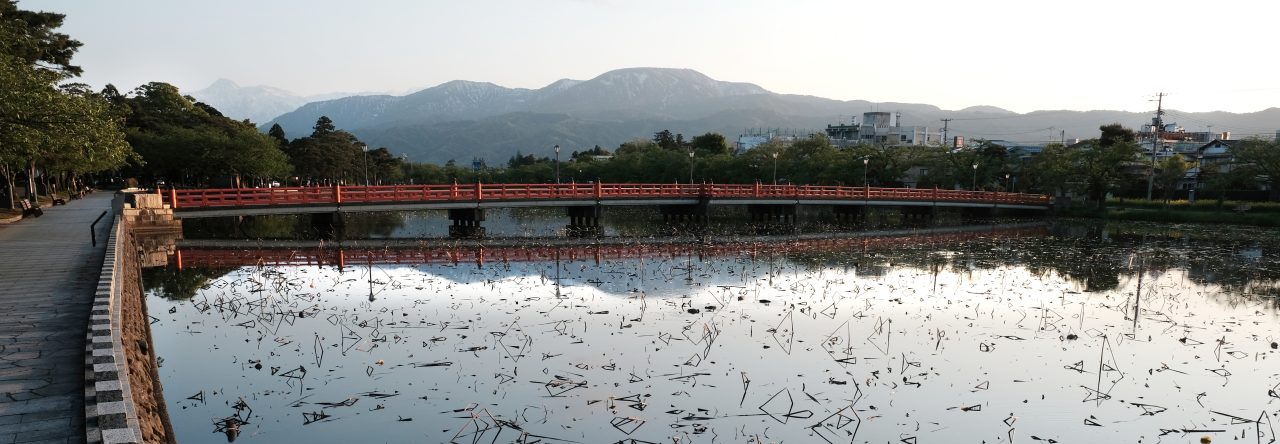
(英語の後に日本語が続きます。) Tokyo POW Camp #4 branch, Naoetsu could have easily turned into “the camp that never was” – a fate suffered by almost all of the POW camps located in Japan — had it not been for the initiative of a small group of Naoetsu citizens who conducted their efforts through the “Council for the Creation of a Peace and Friendship Monument”.
Japan collectively focused on its reconstruction and subjects like war and POWs were subjects that most people preferred to put behind them. It has taken time for Japan to acknowledge what took place in POW camps and particularly in Naoetsu in 1942-1945.
The repatriated POWs mostly preferred to get on with their lives and other than the Yokohama war tribunals there was no further interaction between Australian POWs and Naoetsu until one of them, Theo Lee sent a letter to the principal of the Naoetsu High School in 1978, inquiring about the camp and about Naoetsu. This was an important first step towards some form of reconciliation. His letter was accompanied by some books about Australian flora and fauna. It started development of a relationship between former POWs, relatives of former camp guards and citizens of Naoetsu that led to the creation of the Naoetsu Peace Memorial Park in 1995.
Timeline:
In 1978 first letter from Theo Lee to the principal of Naoetsu High School. Further correspondence led to the visit by Mr. and Mrs. Lee in 1982 to Naoetsu.
In 1983, Jack Mudie, a former POW visited Naoetsu.
In May, 1988, a memorial service was held at the site of the former POW camp under the auspices of the Cowra-Japan Society. Frank Hole, a former POW had brought and presented a plaque commemorating the 60 Australians who died there. For several years this plaque was kept at the Joetsu City Hall but in 1995 it was incorporated in the Peace Memorial Park.
In July, 1993, a group of eight local residents of Joetsu launched a plan to erect a permanent memorial on the site of the former POW camp to honor the victims and to bring reconciliation. After gaining official backing from the City authorities, a Council for the Creation of a Peace and Friendship Monument was set up, presided by Sakuji Sato, former Mayor of Naoetsu. Fund-raising was started, the landowner was persuaded to sell the land, and contacts were established with the Australia-Japan Foundation and Australian ex-POWs and their families.
In July, 1995 Jack Mudie visited Naoetsu again.
On October 8, 1995, in a ceremony attended by Australian Ambassador Ashton Calvert and 33 Australian former POWs and bereaved family members, the Peace Memorial Park was officially dedicated. Almost all the bereaved families of the executed guards also attended.
From Naoetsu, you can just see the Park, across the Seki River near the port. A grassy area, two sculptures and two memorial stones. Joetsu city added a building in 2000, housing meeting rooms and a small museum on the 2nd floor.
The focal point of the park is the Statues of Peace and Friendship designed by the sculptor Tetsuji Okamoto, who was born in Joetsu.


During the planning phase of the memorial park, controversy arose over the council’s plan to incorporate cenotaphs for the sixty Australians who died in the camp as well as for the eight Japanese guards executed after the war alongside each other on the pedestal of the main monument. The controversy was resolved by erecting separate cenotaphs for the sixty Australians and for the eight guards to either side of the monument. At the request of the families of the executed guards, there was an inscription on the cenotaph reading “Eight Stars in the Peaceful Sky”, instead of the names of individual guards.
The Naoetsu Peace Memorial Park is one of the very few memorials in Japan acknowledging the suffering of foreign prisoners of war in Japan and Japanese responsibility for it.




After dedication of the Peace Memorial in 1995, the activities of the Council for the Creation of a Peace and Friendship Monument were taken over in 1996 by the Japan and Australia Society of Joetsu.
There was a subsequent visit in 2000 from the Australian side, sponsored by Japan’s MoFA. In 2002, a representative of Australia’s RSL visited Joetsu, followed by a visit from the president of the RSL the following year.
In 2003, Mayor Konoura and a group of citizens from Naoetsu visited Cowra and on that occasion a Peace and Friendship Agreement was exchanged between Joetsu and Cowra, connecting the wartime experiences of both cities.
Joetsu and Cowra are both anxious to re-start the exchanges that have been halted as a result of the Covid pandemic. These exchanges should in the first place serve as a reminder not to repeat the mistakes that led to war. Or, as a memorial stone in the garden of the temple (Kakushinji) where the ashes were kept of 60 Australians POWs who died in Naoetsu, beautifully sums up the pointlessness of war:

平和記念公園, 直江津
直江津捕虜収容所も、「平和友好記念像を建てる会」を中心とした市民の活動がなければ-日本にあるほとんどの捕虜収容所がそうであったように ―「なかったこと」にされかねない場所であった。
日本は戦後の復興に注力し、戦争や捕虜といったテーマは、多くの人にとって過去のものとして扱われてきた。日本が捕虜収容所、特に直江津捕虜収容所で1942~1945年に起こったことを認めるまでには時間がかかった。
送還されたほとんどの元オーストラリア人捕虜は、祖国での生活に専念することを望んだ。横浜裁判を除いては、元捕虜のテオ・リー氏が1978年に当時の直江津高校校長に収容所と直江津について質問する内容の手紙を送るまで、彼らと直江津の間に交流はなかった。テオ・リー氏がきっかけとなったこの出来事は、ある種の和解に向けた重要な第一歩となった。この手紙には、オーストラリアの動植物に関する本が添えられていた。この手紙がきっかけとなり、元捕虜、元収容所職員の親族、直江津市民が交流を深め、1995年の直江津平和記念公園の設立へとつながった。
年表:
1978年、テオ・リー氏から直江津高校の校長に初めて手紙が届く。その後、1982年にリー夫妻が直江津を訪れる。
1983年、元捕虜のジャック・ミューディー氏が直江津を訪問。
1988年5月、カウラ日本協会の主催で、捕虜収容所跡地で慰霊祭が行われた。元捕虜のフランク・ホール氏が、収容所で死亡した60人のオーストラリア人を記念する銘板を贈呈した。この銘板は数年間、上越市役所に保管されていたが、1995年に平和記念公園に設置された。
1993年7月、上越市民8人のグループが、捕虜収容所跡地に犠牲者の慰霊と和解のための永久記念碑を建立する計画を立ち上げた。市当局の支援を得て、佐藤策次前直江津市長を会長とする「平和友好像を建てる会」が発足した。募金活動を開始し、地主を説得して土地を購入し、豪日交流基金やオーストラリア人元捕虜とその家族へ連絡を取った。
1995年7月、ジャック・ミューディー氏が再び直江津を訪れる。
1995年10月8日、アシュトン・カルヴァート豪州大使、豪州人元捕虜・遺族32名が出席し、平和記念公園が正式に開園されるにあたり式典が行われた。処刑された看守の遺族もほぼ全員出席した。
直江津からは、港近くを流れる関川を挟んで、平和記念公園が見える。芝生の広場、2つの彫刻と2つの記念碑。上越市は2000年に会議室のある小さな展示館を併設した。
公園の中心にあるのは、上越市出身の彫刻家、岡本銕二(てつじ)氏がデザインした「平和友好像」である。
記念公園の計画段階で、収容所で亡くなった60人のオーストラリア人と、戦後処刑された8人の日本人看守の記念碑を、メインモニュメントの台座に並べるという議会案をめぐって論争が起こった。しかし、この論争は、碑の両脇にそれぞれの記念碑を別々に建てることで解決された。記念碑には、処刑された看守の遺族の要望で、個人名ではなく「平和の空に八つの星」と刻まれた。
直江津平和記念公園は、日本における外国人捕虜の苦痛とそれに対する日本の責任を認めた、日本で数少ない記念碑の一つである。
1995年の平和記念像建立後、1996年には「直江津捕虜収容所の平和友好記念像を建てる会」の活動を上越日豪協会が引き継いだ。
その後、2000年に日本の外務省が主催したオーストラリア側の直江津訪問があった。2002年にはオーストラリアのRSL (退役軍人連盟)代表が上越を訪れ、翌年にはRSL会長の訪問があった。
2003年には木浦元上越市長と市民グループがカウラ市を訪問し、その際に戦時中の経験を共有する両市間で平和友好協定が交わされた。
上越市とカウラ市は、コロナ禍の為に中断している交流の再開を切に願っている。このような交流は、戦争の過ちを再び繰り返さないための手がかりであるはずだ。あるいは、直江津で亡くなった元オーストラリア人捕虜60人の遺灰を預かっていた寺の石碑が、戦争の無意味さを見事に言い表しているように-「死者には敵も味方もありゃせん」

Pingback: The COWRA BREAKOUT – JOETSU STORIES
Pingback: The NAOETSU POW CAMP – JOETSU STORIES